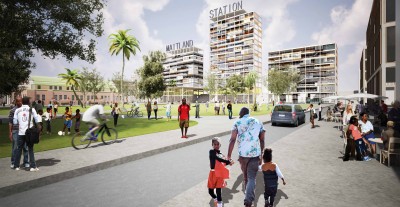Innovativ, vielfältig, lebenswert und nachhaltig sollen unsere Städte wachsen. Das erfordert eine zukunftsfähige und resiliente Nachverdichtungsstrategie. Das Projekt „Dichte & Nutzungsmischung: Innovative Ansätze der Nachverdichtung in deutschen und amerikanischen Städten“ zielt darauf ab, Netzwerke zwischen deutschen und US-amerikanischen Kommunen zu unterstützen, um in beiden Ländern (neue) Instrumente zur Verdichtung zu erforschen.
Das Projekt ist Teil des internationalen Netzwerks „Dialogues for Urban Change“, das den internationalen Austausch stärken und internationale Lernnetzwerke in der Stadtentwicklung fördern soll. Das Format besteht aus insgesamt drei Netzwerken zwischen jeweils Deutschland und den USA, Südafrika und der Ukraine. Die Netzwerke bearbeiten verschiedene thematische Schwerpunkte und umfassen unterschiedliche Ebenen der Verwaltungshierarchien. Ziel ist es, die Stadtentwicklungsansätze in den beteiligten Ländern zu verbessern.
TSPA nimmt gemeinsam mit der Bauhaus-Universität Weimar und dem Experten für integrierte Stadtentwicklung, Stefan Heinig, am deutsch-amerikanischen Austauschformat teil. Das auf 3 Jahre angelegte Projekt wird vom Bundesministerium für Wohnen, Stadtentwicklung und Bauwesen (früherer BMI) gefördert, vom BBSR (Bundesinstitut für Bau-, Stadt- und Raumforschung) geleitet und von der GIZ unterstützt.
Parallel zur Projektbearbeitung erstellen wir regelmäßig Internetbeiträge, um einen aktiven Informationsfluss zu gewährleisten. Der erste Beitrag zur Vorstellung von Projektidee und Konzept wurde bereits vom Bundesinstitut für Bau-, Stadt- und Raumforschung (BBSR) veröffentlicht.
Beide Dokumente sind hier einsehbar:


 English
English Русский
Русский

















